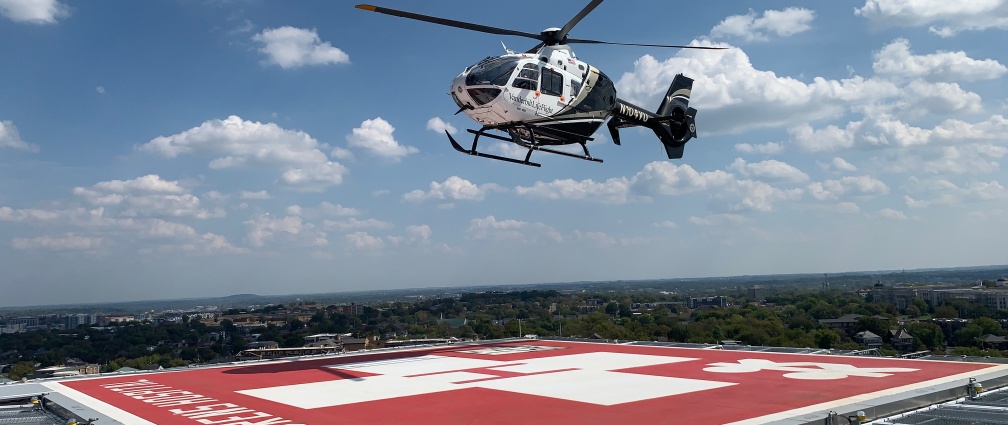Tennessee can see a broad spectrum of winter weather conditions between Memphis and Knoxville and Columbia to Clarksville. Since all areas are susceptible to accumulating snow and or icing conditions we want to provide some helpful helipad tips.
–Use airside urea (or "Carbamide"), sodium formate, or sodium acetate for deicing. Sodium formate and sodium acetate continue to be effective at much colder pavement temperatures than urea which is practical only at temperatures above 15° F (-10° C).
–Do not use sodium chloride (rock salt), calcium chloride, or lithium chloride products for deicing. These chemicals are known to be corrosive to aircraft.
–Do not use sand in an attempt to provide a no slip surface. Sand will not stay in place under rotor wash and can also be a projectile hazard.
–Ensure helipad safety signage and lighting is unobstructed.
–Snow piles adjacent to the helipad be either lower than 20 inches or twenty (20) feet away from the helipad to avoid damage to the tail of the helicopter.
–Red paint on the helipad has been shown to aide in the melting process. See FAA Advisory Circular (AC) 150-5390-2BPara 409b. (2) and fig 4-10b
–Snow should be removed promptly once accumulation has ceased. Helicopter transport may be the preferred choice of transport until roadways have been cleared which can take some time.
–Rotor wash winds may be severe which can be problematic for off load staff. Please ensure that they have proper attire for winter weather.
–Do not pile snow in egress areas from the helipad.
–Ensure that piled snow is in an area that when it melts it will not drain onto the helipad or walkways should it re-freeze later and create icy conditions.
–When requesting a helicopter notify their communication center if the helipad has snow or ice covering it.
•General helipad tips regardless of weather include not approaching the helicopter unless signaled by the crew, avoid raising or carry items above your head, do not open or close doors, and do not walk behind the helicopter.
